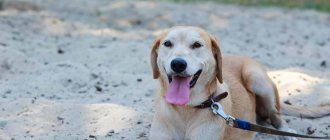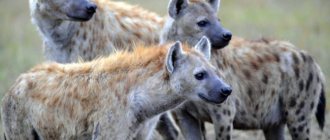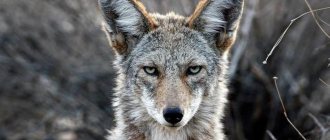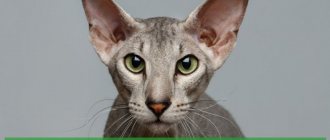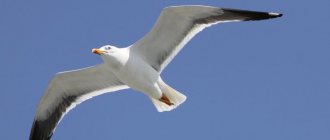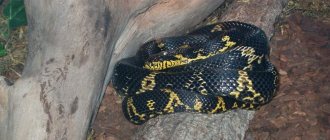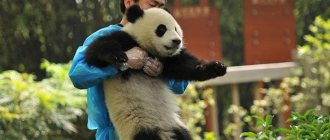Extinct lion population in North Africa
| Barbary lion | |
| Male Barbary lion in Algeria. Photograph: Alfred Edward Pease, 1893 [3] | |
| Scientific classification | |
| Kingdom: | Animalia |
| Type: | Chordata |
| Class: | Mammals |
| Order: | Predator |
| Suborder: | Feliformation |
| Family: | Feline |
| Subfamily: | Panthers |
| Genus: | Panther |
| Variety: | P. leo |
| Subspecies: | P.l. lion [1] [2] |
| Trinomial name | |
| Panthera leo leo [1] [2] (Linnaeus, 1758) | |
Barbara's Lion
There was
a Panthera lion lion
population in North Africa that is regionally extinct. [4] This population originated in the coastal regions of the Maghreb, from the Atlas Mountains to Egypt, and was decimated by the spread of firearms and lion shooting bounties. [3] A comprehensive review of hunting records and sightings found that small groups of lions were able to survive in Algeria until the early 1960s, and in Morocco until the mid-1960s. [5]
Until 2022, the Barbary lion was considered a separate subspecies of lions. [6][2][1] Results of morphological and genetic analyzes of lion specimens from North Africa published in 2008 showed that the Barbary lion is not significantly different from specimens collected in western and northern central Africa. [7] It falls into the same phylogeographic group as the Asiatic lion, [8] and is also closely related to lion populations in West Africa. [9]
The Barbary lion has also been called the "North African lion"[3], "Berber lion", "Atlas lion"[10] and the "Egyptian lion". [eleven]
Characteristics[edit]
Barbary lion at the Bronx Zoo, 1897.
Zoological specimens of Barbary lions vary in color from light to dark brown. The skins of male lions had short manes, light, dark or long manes. [12] Head to tail length of stuffed males in zoological collections ranges from 2.35 to 2.8 m (7 ft - 1/2 in 9 ft 2 in), while females are about 2.5 m (8 ft in 2) . The size of the skull varied from 30.85 to 37.23 cm (12 5/32 to 14 21/32 in). Some manes extended over the shoulder and under the belly to the elbows. Mane hair is 8 to 22 cm (3 to 8 1/2 in) long. [13] [12][14]
In 19th-century hunter's accounts, the Barbary lion was considered the largest lion, with wild males ranging in weight from 270 to 300 kg (600 to 660 lb). However, the accuracy of such data measured in the field is questionable. Captive Barbary lions were much smaller, but were kept in such poor conditions that they may not have reached their full potential size and weight. [15]
It has long been believed that the color and size of a lion's mane is a distinct enough morphological characteristic to confer subspecific status on lion populations. [16] Mane development varies with age and among individuals from different regions, and is therefore not a sufficient characteristic to identify subspecies. [17] The size of the mane is not considered evidence of the origin of Barbary lions. Instead, the mitochondrial DNA results support the genetic distinctness of Barbary lions from a unique haplotype found in museum specimens that is believed to be of Barbary lion ancestry. The presence of this haplotype is considered a reliable molecular marker to identify captive Barbary lions. [18] Barbary lions may have evolved a long-haired mane due to lower temperatures in the Atlas Mountains than other regions of Africa, especially in winter. [15] Results from a long-term study of lions in the Serengeti National Park indicate that environmental temperature, nutrition, and testosterone levels influence the color and size of a lion's mane. [19]
Body type
If you look at a photograph of a lion, you will notice that it is very similar to a big cat. This animal is the largest representative of the cat family. In size it can only be inferior to tigers.
He has a flexible and agile physique, with well-developed muscles in the neck and front pair of paws, on which claws are located, reaching a length of seven centimeters. A large head, an elongated muzzle and a powerful jaw distinguish this animal from the rest.
Taxonomic history[edit]
The map shows the range of P. l. leo
and
P. l.
melanochaita [8]
Felis leo
is the scientific name proposed by Carl Linnaeus in 1758 for a lion-type specimen from Constantine, Algeria. [20] Following Linnaeus' description, several zoological specimens of lions from North Africa were described and proposed as subspecies in the 19th century:
- Felis leo barbaricus,
described by the Austrian zoologist Johann Nepomuk Meyer in 1826, was a lion pelt from the Barbary Coast. [21] - Felis leo nubicus,
described by Henri Marie Ducrotet de Blainville in 1843, was a male lion from Nubia that was sent from Cairo to Paris by Antoine Clot and died in the Ménagerie du Jardin des Plantes in 1841 [22].
In the 20th century, there was much debate and disagreement among zoologists regarding the classification of lions and the validity of the proposed subspecies:
- In 1939, Glover Morrill Allen considered F. barbaricus
and
nubicus
synonymous with
F. l.
a lion . [23] - Reginald Innes Pocock placed the lion in the genus Panthera
when he wrote about the Asiatic lion. [24] - In 1951, John Ellerman and Terence Morrison-Scott identified only two lion subspecies in the Palearctic Kingdom, namely the African lion Panthera leo leo
and the Asiatic lion
P. l.
peach _ [25] - Some authors considered P. l.
nubicus is a valid subspecies and synonym of
P. l.
massaica . [13] [26] [27] - In 2005 P. l.
barbarica ,
nubica
and
somaliensis
were assigned to
P. l.
a lion . [2] - In 2016, IUCN Red List experts used P. l.
leo for all lion populations in Africa. [4]
In 2022, the Cat Classification Task Force of the Cat Specialist Group classified lion populations in North, West and Central Africa and Asia as P. l. a lion
. [1]
Genetic research[edit]
The results of a phylogeographic analysis using African and Asiatic lion specimens were published in 2006. One of the African specimens was a vertebra from the National Museum of Natural History (France), which was discovered in the Nubian part of Sudan. In terms of mitochondrial DNA, it is grouped with lion skull samples from the Central African Republic, Ethiopia and northern Democratic Republic of the Congo. [18]
Although the historical Barbary lion was morphologically distinct from others, its genetic uniqueness remained in question. [28] A comprehensive study of lion evolution in 2008 examined 357 wild and captive lion specimens from Africa and India. The results showed that four captive lions from Morocco did not exhibit any unique genetic characteristics, but shared mitochondrial haplotypes with lion samples from West and Central Africa. All were part of a major mtDNA grouping that also included Asiatic lion specimens. The results supported the hypothesis that the group originated in East Africa and traveled north and west about 118,000 years ago during the first wave of lion expansion. It broke up in Africa and later in Western Asia. Lions in Africa probably form a single population that interbred over several waves of migration beginning in the late Pleistocene. [7] Genomic data from a wild-origin historical lion specimen from Sudan clustered with P. l. leo
in the mtDNA-based phylogeny, but with high affinity to
P. l.
melanochaita . [9]
What does the African lion eat?
Photo: Predatory African lion
African predators hunt large zebras, wildebeests, African pigs, warthogs, reptiles and a variety of small animals, including rodents and birds. Representatives of the cat family do not hesitate to take prey from other smaller predators and pick up carrion.
Lions prefer to hunt in small groups at dusk and at night. They jump on top of the victim and immediately dig into the throat, trying to knock the prey to the ground as quickly as possible. The hunt ends successfully only in half of the cases. Lions do not run long distances due to their physiological characteristics - they have a very small and weak heart relative to their large muscular body.
Sometimes lions go hungry for several days. Each individual needs at least 7-9 kg of meat per day. They drink water willingly at every opportunity, but if it is not enough, they can do without it for up to 4-5 days, since they obtain the necessary liquid from food. Despite the fact that mainly only females hunt, males consume food first and only then do lionesses and young individuals. The eating process is always very noisy with fighting and growling.
If the prey is very large and strong, the male can join the hunt and help the lionesses. Solitary males, who do not yet have their own pride, go out hunting alone, but due to their impressive mane, it is not as effective as that of females, so they often choose lighter and smaller prey.
Former distribution and habitat[edit]
The last photograph of a wild lion in the Atlas Mountains, taken by Marcelin Flandrin during a flight from Casablanca to Dakar in 1925.
Painting by Eugene Delacroix of a lion hunt in Morocco, 1855, in the Hermitage.
In Egypt, historical evidence shows that lions lived in the Sinai Peninsula, along the Nile, in the eastern and western deserts, in the Wadi el-Natrun area and along the sea coast of the Mediterranean Sea. [29] In the fourteenth century BC. , Thutmose IV was hunting lions in the mountains near Memphis. [30] The growth of civilizations along the Nile and the Sinai Peninsula by the early second millennium BC and desertification contributed to the isolation of lion populations in North Africa. [31]
Historical sighting and hunting records from the 19th and 20th centuries indicate that lions inhabited the range countries of the Atlas Mountains from Tunisia to Morocco. [5]
In Libya, the Barbary lion lived on the Mediterranean coast until the beginning of the 18th century, and in Tunisia it was exterminated by 1890 [32].
In Algeria, the Barbary lion lived in the forested hills and mountains between the Peak of Taza in the east, Ouarsenis in the west and the plains of the Chelif River in the north. Lions also inhabited the forests and wooded hills of the province of Constantine and south of the Ores Mountains. [3] By the 1830s, lions may have already been extirpated along the coast and near populated areas. [33] By the mid-19th century, the lion population declined sharply as bounties were paid for lion shooting. The cedar forests of Chelia and neighboring mountains sheltered lions until about 1884. [3] They disappeared from the Bon region by 1890, from the Khrumir and Souk Akhras regions by 1891, and from Batna province by 1893. [34] The last known sighting of a lion in Algeria was in 1956 in the Beni-Ortilane region. [5]
In Morocco, the last recorded shooting of a wild Barbary lion occurred in 1942 near Tizi-Tichka in the Atlas Mountains. A small remnant population may have survived in remote mountainous areas until the early 1960s. [5]
Natural enemies of a lion
As for African lions, in nature they often conflict with hyenas due to a similar diet. Lionesses can take prey from hyenas. And the last thing to do is just step aside and wait until the predatory cats leave, having had their fill. A pack of hyenas may attempt to take the prey if there are few lionesses. Relationships between lions and leopards and cheetahs develop in a similar way. Either the strongest or the most numerous wins. Since other cats besides lions do not live in groups, they usually win. In addition, they attack the young of other species to eliminate competition for the future. The Nile crocodile remains a serious rival for lions. While the huge reptile is in the water, the lion cannot cope with it. The biggest threat to the predator population remains humans. But it can also save the species and subspecies from complete destruction by creating closed reserves with conditions safe for lions.
Behavior and ecology[edit]
In the early 20th century, when Barbary lions were no longer common, they were seen in pairs or small family groups consisting of a male and female with one or two cubs. [3] Between 1839 and 1942, wild lions were observed as individuals, pairs, and family units. Analysis of these observations suggests that lions continued to live in prides even in the face of increasing persecution, especially in the eastern Maghreb. The size of prides was likely similar to prides living in sub-Saharan habitats, while Barbary lion population densities are thought to be lower than in wetter habitats. [5]
When Barbary deer and gazelles became rare in the Atlas Mountains, lions began to prey on herds of livestock, which they tended quite carefully. [35] They also hunted wild boar and red deer. [36]
Cute predators in this area included the African leopard and the Atlas bear. [6] [37]
Lion breeding
Pregnancy among lionesses of the same pride occurs at approximately the same time, so that the babies are born at the same time and it is easier to feed and raise them.
The duration of pregnancy is 110 days. To give birth, lionesses go away from the pride, to secluded places, dense thickets of bushes and caves. A litter contains 1-4 cubs weighing up to 2 kg. They are born blind and helpless. Lion cubs' eyes open at 10 days and they begin to walk at three weeks. Lionesses constantly go hunting and leave their babies alone. Periodically, they change their den so that predators cannot find the cubs by smell. A female with cubs usually comes to a pride 1.5-2 months after their birth. She feeds her offspring with milk for about six months. Attitudes towards children vary: mothers usually love girls more than boys. If the father of the cubs dies in a pride, then another lion kills the small male lion cubs. This may not affect the mother in any way, but she will always protect her daughters.
Young males at the age of 2-3 years (on reaching puberty) are expelled from their native pack and they begin a solitary life, create their own pride, or join someone else's pack. Sometimes an adult lion spends his entire life alone, but rarely, sometimes they live in pairs. Females spend their entire lives next to their mother. In any pride, all lionesses are related. There is a very high mortality rate among young lions. Only about 20% survive to 2 years, that is, 80 lions out of every hundred die.
The first birth in lionesses occurs at approximately the age of 4 years. The period of active life of the predator continues from 4 to 10 years, after which old age sets in. The lifespan of lions in the wild is up to 15 years. In captivity, it reaches 20-22 years.
In captivity[edit]
See also: Damnatio ad bestias
Lioness and cubs at the Bronx Zoo, USA, 1903.
A pair of lions at the Rabat Zoo, Morocco
Captive male in Sindibad Park, Casablanca, Morocco
The lions kept in the Tower of London menagerie during the Middle Ages were Barbary lions, DNA analysis of two well-preserved skulls excavated at the Tower between 1936 and 1937 has revealed. The skulls were radiocarbon dated to approximately 1280–1385. and 1420-1480 [31] In the 19th century and early 20th century, lions were often kept in hotels and circus menageries. In 1835, by order of the Duke of Wellington, the lions of the Tower of London were moved to improved enclosures at London Zoo. [38]
The lions at Rabat Zoo exhibited characteristics typical of the Barbary lion. [39] Nobles and Berbers presented lions as gifts to the Moroccan royal family. When the family was forced to leave the country in 1953, the Rabat lions, of which there were 21 in total, were transferred to two zoos in the region. 3 of them were transferred to a zoo in Casablanca, and the rest to Meknes. The Meknes lions were returned to the palace in 1955, but the Casablanca lions never returned. In the late 1960s, new lion enclosures were built in Temara near Rabat. [15] MtDNA results A 2006 study found that a lion kept in Germany's Neuwied Zoo came from this collection and is most likely a descendant of the Barbary lion. [10] Five lion specimens from this collection were not maternal Barbary lions. However, Barbary lion genes are likely to be present in regular European zoos as it was one of the most commonly introduced subspecies. Many lions in European and American zoos that are kept without subspecies classification are likely descendants of Barbary lions. [16] Several researchers and zoos supported the development of a studbook for lions coming directly from the collection of the King of Morocco. [28]
At the beginning of the 21st century, the Addis Ababa Zoo housed 16 adult lions. With their dark brown manes extending across their front legs, they were similar to Barbary or Cape lions. Their ancestors were captured in southwestern Ethiopia as part of the zoological collection of Emperor Haile Selassie of Ethiopia. [40]
Interesting facts about the animal
- The impact force of the front paws reached 170 km. This was enough to break the back of the artiodactyl animal.
- The thick mane protects the animal from the scorching sun and thorny thickets.
- According to the International Convention, the living African lion is listed in the Red Book as an endangered species. It is on the verge of extinction.
- There are about 20 thousand lions left around the world.
- The conservation status of the Asian raptor is a threatened species. The population size is about 200 individuals. Today the animal is protected by law.
- The roar of the predator was heard 7 km away.
- At night, carnivores have nearly 6 times better vision than humans.
- There have never been two identical animals on Earth. The lion's face is unique to one specimen, as is the case with the human face.
- Animals with dark fur survived the heat worse, but had greater reproductive capacity.
Cultural significance[edit]
Further information: Cultural depictions of lions and the lion § Cultural significance
The lion appeared frequently in early Egyptian art and literature. [41] Lion statues and figurines found at Hierakonpolis and Koptos in Upper Egypt date from the Early Dynastic period. [42] The early Egyptian deity Mehit was depicted with the head of a lion. [43] In ancient Egypt, the lion-headed deity Sekhmet was revered as the protector of the country. [44]She personified destructive power, but was also considered a protector against hunger and disease. Lion-headed figures and amulets have been found in tombs in the Aegean islands of Crete, Euboea, Rhodes, Paros and Chios. They are associated with Sekhmet and date back to the Early Iron Age between the 9th and 6th centuries BC. [45] The remains of seven lions, mostly juveniles, were excavated at the Umm el-Qa'b necropolis in the tomb of Khor Akha, dating to the 31st century BC. [46] In 2001, the skeleton of a mummified lion was found in the tomb of Maya in the necropolis dedicated to Tutankhamun at Saqqara. [47] He probably lived and died during the Ptolemaic period, showed signs of malnutrition, and probably lived in captivity for many years. [48]
Barbary Lion at the Colosseum in Rome
In Roman North Africa, lions were regularly captured by skilled hunters for shows in amphitheatres. [36] [49]
Morocco's national football team is called the "Lions of Atlas" and fans usually wear lion-faced T-shirts or a lion costume. [50]
- Statue of Sekhmet in the Temple of Ptah
- Lion statue dating from the Thirtieth Dynasty of Egypt 378–361. BC, exhibited in the Egyptian Antiquities Department of the Louvre.
- Illustration of a Barbary lion by Joseph Bassett Holder, 1898
- Lion sculpture by Henri Jean Moreau, 1930, Ifrane, Morocco
- Stuffed Barbary and Cape lions at the National Museum of Natural History
- The relationship of the camel itself with the lion and humanity is depicted in this taxidermy diorama by Jules and Édouard Verreault, which is called "Lion Attacking a Camel," and was acquired by the Carnegie Museum of Natural History in Pittsburgh, in 1898.[51]
Gender Differences
One of the main features of this species is sexual dimorphism. The female lion and the male have a number of significant differences from each other.
For example, the male’s head is crowned with an incredibly thick mane, which begins to appear in lion cubs from 6 months. Genetics and age determine how thick and long the mane will be.
Links[edit]
- ^ abc Kitchener, A.C.; Breitenmoser-Würsten, C.; Eizirik, E.; Gentry, A.; Werdelin, L.; Wilting, A.; Yamaguchi, N.; Abramov, A.V.; Christiansen, P.; Driscoll, C.; Duckworth, J. W.; Johnson, W.; Luo, S.-J.; Meijaard, E.; O'Donoghue, P.; Sanderson, J.; Seymour, K.; Bruford, M.; Groves, C.; Hoffmann, M.; Nowell, K.; Timmons, Z., & Tobe, S. (2017). "Revised Taxonomy of Felids: Final Report of the IUCN Cat Classification Task Force of the IUCN Cat Specialist Group" (PDF). Cat News
(Special Issue 11): 71–73. - ^ abc Wozencraft, W. C. (2005). "Panther Leo". In Wilson, Delaware; Reader, D. M. (ed.). Mammal Species of the World: A Taxonomic and Geographical Guide (3rd ed.). Johns Hopkins University Press. item 546. ISBN. 978-0-8018-8221-0. OCLC 62265494.
- ^ abcdef Pease, A. E. (1913). "Distributing Lions". Book of Leo
. London: John Murray. pp. 109−147. - ^ ab Bauer, H.; Packer, C.; Funston, P. F.; Henschel, P., & Nowell, C. (2016). "Panther Leo". IUCN Red List of Threatened Species
.
2016
: e.T15951A115130419. - ^ a b c d e Black, South America; Fellows, A.; Yamaguchi, N.; Roberts, D. L. (2013). "Exploring the extinction of the Barbary lion and its implications for felid conservation". PLOS ONE
.
8
(4):e60174. Bibcode: 2013PLoSO...860174B. DOI: 10.1371/journal.pone.0060174. PMC 3616087. PMID 23573239. - ^ab Nowell, K. & Jackson, P. (1996). "African lion, Panthera leo (Linnaeus, 1758)" (PDF). Wildcats: A Status Review and Conservation Action Plan
. Gland, Switzerland: IUCN/SSC Cat Specialist Group. pp. 17–21. ISBN 978-2-8317-0045-8. - ^ ab Antunes, A.; Troyer, J.L.; Roelke, M.E.; Pecon-Slattery, J.; Packer, C.; Winterbach, S.; Winterbach, H. and Johnson, W.E. (2008). "Evolutionary dynamics of Lion Panthera leo revealed by host and viral population genomics". PLOS Genetics
.
4
(11): e1000251. DOI: 10.1371/journal.pgen.1000251. PMC 2572142. PMID 18989457. - ^ a b Bertola, LD; Jongbloed, H.; Van der Gaag KJ; De Knijff, P.; Yamaguchi, N.; Hooghiemstra, H.; Bauer, H.; Henschel, P.; White, P.A.; Driscoll, California; Tende, T.; Ottosson, U.; Saidu, Y.; Vrieling, K. and de Jong, H. H. (2016). "Phylogeographic patterns in Africa and high-resolution determination of genetic clades in the lion (Panthera leo)". Scientific reports
.
6
: 30807. Bibcode: 2016NatSR ... 630807B. DOI: 10.1038/srep30807. PMC 4973251. PMID 27488946. - ^ ab Manuel, M. d.; Ross, W.; Sandoval-Velasco, M.; Yamaguchi, N.; Vieira, F. G.; Mendoza, M.L.Z.; Liu, S.; Martin, M.D.; Sinding, M.-HS; Mak, SST; Carøe, C.; Liu, S.; Guo, C.; Zheng, J.; Zazula, G.; Baryshnikov, G.; Eizirik, E.; Koepfli, K.-P.; Johnson, WE; Antunes, A.; Sicheritz-Ponten, T.; Gopalakrishnan, S.; Larson, G.; Yang, H.; O'Brien, S. J.; Hansen, A.J.; Zhang, G.; Marques-Bonet, T. & Gilbert, M. T. P. (2020). "Evolutionary history of extinct and living lions". Proceedings of the National Academy of Sciences of the United States of America
.
117
(20):10927–10934. DOI: 10.1073/pnas.1919423117. PMC 7245068. PMID 32366643. - ^ab Burger, J.; Hemmer, H. (2006). "Urgent call for further breeding of the zoo's relict population of the critically endangered Barbary lion (Panthera leo leo Linnaeus 1758)" (PDF). European Journal of Wildlife Research
.
52
(1):54–58. doi:10.1007/s10344-005-0009-Z. S2CID 30407194. Archived from the original (PDF) on 2007-07-03. Retrieved April 4, 2007. - Heptner, V. G.; Sludsky, A.A. (1992) [1972]. "A lion" . Mammals of the Soviet Union. Moscow: Vysšaia Škola
[
Mammals of the Soviet Union. Volume II, part 2. Carnivores (hyenas and cats)
. Washington, DC: Smithsonian Institution and National Science Foundation. pp. 83–95. ISBN 978-90-04-08876-4. - ^ a b Mazak V. (1970). “Barbary lion, Panthera leo leo
(Linnaeus, 1758);
Some systematic records and a preliminary list of specimens held in European museums." Zeitschrift für Säugetierkunde
.
35
: 34-45. - ^ a b Hemmer, H. (1974). "Untersuchungen zur Stammesgeschichte der Pantherkatzen (Pantherae) Teil 3. Zur Artgeschichte des Löwen Panthera (Panthera) leo (Linnaeus, 1758)". Veröffentlichungen der Zoologischen Staatssammlung
.
17
: 167–280. - Mazak, J. H. (2010). "Geographical variation and phylogenetics of modern lions based on craniometric data". Journal of Zoology
.
281
(3):194–209. DOI: 10.1111/j.1469-7998.2010.00694.x. - ^ abc Yamaguchi, N.; Haddain, B. (2002). "The North African Barbary Lion and the Atlas Lion Project". International Zoo News
.
49
(8):465–481. - ^ ab Barnett, R.; Yamaguchi, N.; Barnes, I.; Cooper, A. (2006). "Lost populations and the conservation of genetic diversity of the lion Panthera leo: implications for its ex situ conservation" (PDF). Preservation of genetics
.
7
(4):507–514. DOI: 10.1007/s10592-005-9062-0. S2CID 24190889. Archived from the original (PDF) on August 24, 2006. - O'Brien, S. J.; Joslin, P.; Smith, G.L.; Wolfe, R.; Schaffer, N.; Heath, E.; Ott-Joslin, J.; Rawal, PP; Bhattacharjee, K. K.; Martenson, J. S. (1987). "Evidence of African Origins for the Founders of the Asiatic Lion Species Survival Plan". Zoo Biology
.
6
(2): 99–116. DOI: 10.1002/zoo.1430060202. - ^ ab Barnett, R.; Yamaguchi, N.; Barnes, I., & Cooper, A. (2006). "Origins, modern diversity and future conservation of the modern lion (Panthera leo)" (PDF). Proceedings of the Royal Society B: Biological Sciences
.
273
(1598):2119–2125. DOI: 10.1098/rspb.2006.3555. PMC 1635511. PMID 16901830. Archived from the original (PDF) on August 8, 2007. - West, PM; Packer, K. (2002). "Sexual selection, temperature and the lion's mane." The science
.
297
(5585):1339–1343. Bibcode: 2002Sci...297.1339W. DOI: 10.1126/science.1073257. PMID 12193785. S2CID 15893512. - Jump up
↑ Linnaeus, C. (1758).
» Felice Leo » . Systema naturae per regna tria naturae: classes secundum, ordines, genera, species, cum characteribus, differentials, synonyms, locis
(in Latin).
1
(10th ed.). Holmia (Laurentii salvii). paragraph 41. Retrieved September 8, 2008. - Meyer, J. N. (1826). Dissertatio inauguralis anatomico-medica de genere felium. Doctoral dissertation
. Vienna: University of Vienna. - Blainville, H. M. D. (1843). " F. leo nubicus
".
Ostéographie or description iconographique compare du squelette et du système dentaire des mammifères récents et fossils pour servir de base à la zoologie et la géologie. Volume 2
. Paris: JB Baillière et Fils. paragraph 186. - Allen, G. M. (1939). "Checklist of African Mammals". Bulletin of the Museum of Comparative Zoology, Harvard College
.
83
: 1–763. - Pocock, R.I. (1930). "Lions of Asia" Journal of the Bombay Natural Historical Society
.
34
: 638–665. - Ellerman, Jr.; Morrison-Scott, T. C. S. (1966). Checklist of mammals of the Palaearctic and India from 1758 to 1946 (second ed.). London: British Natural History Museum. pp. 312–313.
- Haas, S.K.; Hayssen, V.; Krausman, P. R. (2005). "Panther Leo" (PDF). Species of mammals
.
762
: 1–11. DOI: 10.1644/1545-1410 (2005) 762[0001:PL]2.0.CO; 2. Archived from the original (PDF) on July 28, 2022. - West, PM; Packer, K. (2013). "Panthera leo Lion". In Kingson, J.; Happold, D.; Butynsky, T.; Hoffmann, M.; Happold, M.; Kalina, J. (Ed.). Mammals of Africa
. Volume V. A&C Black. paragraphs 149−159. ISBN 978-1-4081-8996-2. - ^ ab Black, S.; Yamaguchi, N.; Harland, A. and Groombridge, J. (2010). "Preservation of genetic health of putative Barbary lions in captivity: analysis of Moroccan royal lions" (PDF). European Journal of Wildlife Research
.
56
(1):21–31. DOI: 10.1007/s10344-009-0280-5. S2CID 44941372. - Planhol, X. (2004). Le Paysage Animal. L'homme et la Grande Faune: Une Zoogéographie Historique
. Paris: Fayard. - Wilkinson, J. G. (1878). Morals and customs of the ancient Egyptians. Volume III
(revised ed.). New York: Dodd, Mead and Co. - ^ ab Barnett, R.; Yamaguchi, N.; Shapiro, B.; Sabin, R. (2008). "Ancient DNA Analysis Indicates Early English Lions Originated in North Africa". Contributions to Zoology
.
77
(1):7–16. DOI: 10.1163/18759866-07701002. - Guggisberg, C. A. W. (1961). Simba: A Lion's Life
. Cape Town: Howard Timmins. - Jump up
↑ Jardine, W. (1834).
"A lion" . Naturalist's Library. Mammalia Vol. II: Natural history of the Felinae
. Edinburgh: W. H. Lizars. pp. 87−123.. - Joleaud, L. (1936). "Zoogéographie mammalogique". Étude géologique de la région de Bône et de La Calle
. Algeria: Bulletin de la carte geological de l'Algerie. paragraph 174. - Johnston, H. H. (1899). "Lion in Tunisia". In Bryden, H. A. (ed.). The Great and Little Game of Africa
. London: Rowland Ward Ltd., pp. 562–564. - ^ ab Pease, A. E. (1899). "Lion in Algiers". In Bryden, H. A. (ed.). The Great and Little Game of Africa
. London: Rowland Ward Ltd., pp. 564–568. - Johnston, H. H. (1899). "African Bear". In Bryden, H. A. (ed.). The Great and Little Game of Africa
. London: Rowland Ward Ltd., pp. 607–608. - Edwards, J. (1996). London Zoo from old photographs 1852–1914
. London: John Edwards. - Nowell, K.; Jackson, P. (1996). "Wild Cats of Africa" (PDF). Wildcats: A Status Review and Conservation Action Plan
. IUCN/SSC Cat Specialist Group, Gland, Switzerland. C. Table I. - Tefera, M. (2003). "Phenotypic and reproductive characteristics of lions ( Panthera leo
) at Addis Ababa Zoo."
Biodiversity and Conservation
.
12
(8):1629–1639. DOI: 10.1023/A: 1023641629538. S2CID 24543070. - Porter, J. H. (1894). "A lion" . Wild animals; a study of the characters and habits of the elephant, lion, leopard, panther, jaguar, tiger, puma, wolf and grizzly bear
. New York: C. Scribner's Sons. pp. 76–134. - Adams, B. (1992). "Two More Lions from Upper Egypt: Hierakonpolis and Koptos." In Friedmann, R.; Adams, B. (ed.). Followers of Horus. Studies dedicated to Michael Allen Hoffman
. Oxford: Oxbow Press. pp. 69–76. - Wilkinson, T. A. H. (1999). Early Dynastic Egypt
. London, New York: Routledge. ISBN 0415260116. - Jump up
↑ Engels, D. W. (2001). Classic cats. The Rise and Fall of the Sacred Cat. London, New York: Routledge. ISBN 0415261627. - Apostola, E. (2014). "Cross-cultural relations between Egypt and Greece in the early Iron Age: depictions of Egyptian lion-headed deities in the Aegean." In Pinarello, Massachusetts; Yu, J.; Lundock, J.; Walsh, K. (ed.). Current Research in Egyptology: Proceedings of the Fifteenth Annual Symposium
. Oxford: Oxbow Books. pp. 100–112. - Boessneck J., von den Driescha, A. (1990). "Die Tierknochenfunde". In Dreyer, G. (ed.). Umm el-Kaab: Nachuntersuchungen im frühzeitlichen Königsfriedhof. 3./4. Vorbericht. Abteilung Kairo
. Berlin: 46. Mitteilungen des Deutschen Archäologischen Instituts.CS1 maint: several names: list of authors (link) - Callou, C.; Samzun, A.; Zivy, A. (2004). "Lion Found in the Egyptian Tomb of Maya." Nature
.
427
(6971): 211–212. DOI: 10.1038/427211a. PMID 14724625. S2CID 4422033. - Samzun, A.; Hennet, P.; Lichtenberg, R.; Callou, C.; Zivy, A. (2011). "Lion du Bubasteillon at Saqqara (Egypt)". Anthropozoologica
.
46
(2): 63–84. DOI: 10.5252/az2011n2a4. S2CID 129186181. - Sparreb, A. (2016). "Chapter 2: Preparing animals for hunting glasses." Venationes Africanae: Hunting Spectacles in Roman North Africa: Cultural Significance and Social Function
. Amsterdam: Amsterdam School of Historical Research. pp. 67–98. ISBN 9789463320238. - ↑
Atlas Lions of Morocco wins second CHAN title in a row, received: February 10, 2022 - Rihanna
Chambers, Delaney (January 29, 2022).
"150-Year-Old Diorama Surprises Scientists with Human Remains". news.nationalgeographic.com
. National Geographic. Retrieved April 22, 2022.
Lifespan
Females tend to live longer than males (about 15-16 years). Lions are at the peak of their strength between 5 and 9 years of age, with only a small proportion of males surviving after reaching 10 years of age. Some males live up to 16 years in the wild. In the Serengeti, females reach the age of 18 years. In captivity, lions live for about 13 years. The oldest lion lived 30 years.
Adults are not threatened by predators, but are vulnerable to humans, starvation, and attacks from other lions. Infanticide is an important factor in increasing mortality among lion cubs.
Female Asiatic lions live an average of 17-18 years, with a maximum of 21. Male Asiatic lions usually reach the age of 16 years. The mortality rate of adult Asiatic lions is less than 10%. In the Gir Forest, about 33% of cubs die within the first year of life.


